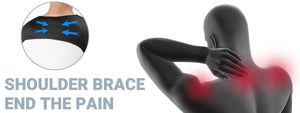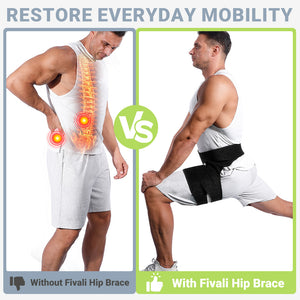Hand Numbness When Elbow is Bent

Explores the problem of hand numbness caused by elbow bending. This page by Fivali seeks to provide useful information to help readers better understand this issue and encourage them to seek medical attention for diagnosis and treatment. Individuals can effectively treat this illness and preserve good hand health by implementing preventative measures and self-care practices.
Possible Causes
There are various potential causes of numbness in the hand while the elbow is bent. These are some examples:
- Cubital tunnel syndrome: This ailment arises from compression or irritation of the ulnar nerve, which runs down the inside side of the elbow.
- Thoracic outlet syndrome: When the elbow is bent, compression of the nerves and blood vessels in the neck and shoulder region can cause hand numbness.
- Carpal tunnel syndrome: Although this ailment is most commonly linked with numbness in the hand and fingers, it can also cause problems when the elbow is flexed due to median nerve compression at the wrist.
- Radial tunnel syndrome: When the elbow is flexed, compression of the radial nerve close to it can cause numbness in the hands.
- Nerve impingement: Poor posture or repetitive motion injuries can cause nerve impingement, which causes numbness in the hand when the elbow is bent.
A healthcare practitioner should be consulted for an accurate diagnosis and suitable treatment based on the underlying reason.
Symptoms and Diagnosis
Depending on the underlying cause, symptoms of hand numbness while the elbow is bent can vary. They could include:
- Prickling or tingling sensation
- Hand or finger sluggishness
- Elbow, forearm, or hand pain or discomfort
- Having trouble grabbing or holding stuff
A healthcare expert will undertake a physical examination and may prescribe tests such as nerve conduction studies or electromyography to determine the reason of hand numbness during elbow flexion. Imaging tests including X-rays, MRIs, and ultrasounds may also be utilized to assess the affected area.
If symptoms persist or worsen, it is critical to seek medical assistance, as untreated diseases can cause long-term harm or impairment. Early identification and therapy can aid in the management of symptoms and the prevention of subsequent issues.
fivalifitness.com
Treatment Options
The following treatments may be used to alleviate hand numbness while the elbow is bent, depending on the underlying cause:
- Rest and activity modification: Avoiding activities that aggravate symptoms can assist in relieving pressure on the afflicted nerves.
- Physical therapy: Specific exercises and stretches can assist in improving strength, flexibility, and posture, minimizing nerve compression, and relieving symptoms.
- Medications: Nonsteroidal anti-inflammatory medications (NSAIDs) or corticosteroid injections may be administered to reduce inflammation and relieve discomfort.
- Splinting or bracing: Wearing a splint or elbow brace at night or during activities that aggravate symptoms can assist in preserving appropriate alignment, relieve pressure, and give support.
- Ergonomic adjustments: Changing workstations or employing ergonomic tools might help improve posture and minimize strain on the affected nerves.
- Surgery: When conservative therapy fail to relieve nerve compression in severe or persistent cases, surgical intervention may be recommended.
It is critical to contact with a healthcare practitioner to identify the best treatment strategy for the individual based on their specific condition and needs.
Prevention and Self-care
Consider the following self-care practices to prevent hand numbness when the elbow is bent and to maintain overall hand health:
- Keep your posture straight: When performing tasks, make sure your neck, shoulders, and arms are properly aligned. This is known as excellent ergonomics.
- Take regular breaks: Avoid engaging in repetitive or forceful tasks that strain the hands and arms for extended periods. Allow time to stretch and rest.
- Use good technique: When performing activities that require bending the elbow, such as typing or using portable devices, make sure your wrist and arm are properly positioned.
- Excessive pressure: Avoid resting the elbows on hard surfaces for extended periods, as this might compress nerves and blood vessels.
- Stay active: Exercise on a regular basis to enhance overall strength, flexibility, and circulation. Include forearm and hand muscle strengthening exercises.
- Manage underlying conditions: If you have diabetes or arthritis, engage with your healthcare practitioner to successfully manage these because they can contribute to nerve-related disorders.
- Maintain a healthy lifestyle: Eat a balanced diet, minimize stress, and get adequate sleep to maintain general nerve and musculoskeletal health.
Remember that if your hand numbness persists or worsens despite self-care, you should seek professional medical guidance for additional examination and treatment.
fivalifitness.com
Reference
Common Nerve Problems in the Elbow - YouTube
Preventing Ulnar Nerve Compression
*Disclaimer
The information provided in articles written by Fivali is intended for educational and reference purposes only. The content on this website (www.fivalifitness.com) is not intended to diagnose, treat, cure, or prevent any disease. We do not recommend self-diagnosis or self-treatment based on the information provided in our articles. Always consult a qualified healthcare professional if you have any concerns about your health or well-being.
If you are experiencing any symptoms or discomfort, we strongly encourage you to seek medical attention from a qualified healthcare professional. Only a licensed healthcare practitioner can provide an accurate diagnosis and an appropriate treatment plan tailored to your individual needs.













